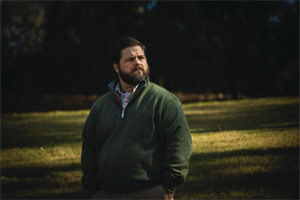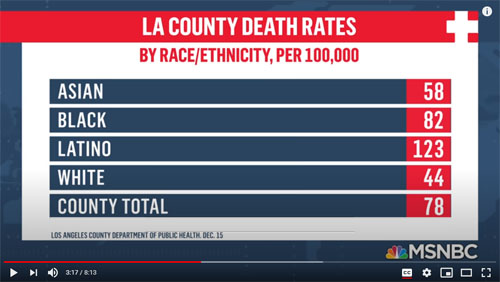by MD Anderson Cancer Center Staff
December 11, 2020
NOTICE: THIS WORK MAY BE PROTECTED BY COPYRIGHT
YOU ARE REQUIRED TO READ THE COPYRIGHT NOTICE AT THIS LINK BEFORE YOU READ THE FOLLOWING WORK, THAT IS AVAILABLE SOLELY FOR PRIVATE STUDY, SCHOLARSHIP OR RESEARCH PURSUANT TO 17 U.S.C. SECTION 107 AND 108. IN THE EVENT THAT THE LIBRARY DETERMINES THAT UNLAWFUL COPYING OF THIS WORK HAS OCCURRED, THE LIBRARY HAS THE RIGHT TO BLOCK THE I.P. ADDRESS AT WHICH THE UNLAWFUL COPYING APPEARED TO HAVE OCCURRED. THANK YOU FOR RESPECTING THE RIGHTS OF COPYRIGHT OWNERS.
As the number of COVID-19 cases continues to increase, you probably have a lot of questions about the coronavirus vaccine. Why are health care workers receiving the COVID-19 vaccine first? How soon will you be able to get the COVID-19 vaccine and get back to some semblance of a normal life? When can cancer patients get vaccinated?
For answers, we spoke with our chief medical officer Welela Tereffe, M.D., and infectious diseases specialist and head of Internal Medicine David Tweardy, M.D.
Why are health care workers receiving the COVID-19 vaccine before patients?
Tereffe: As vaccine production ramps up, there will be a limited number of doses available.
Federal and state guidelines require that, as long as vaccine supply is limited, the vaccine must be available to health care workers first. MD Anderson is one of the Houston health systems selected as a pre-position site for COVID-19 vaccines that are authorized by the Food and Drug Administration for emergency use. MD Anderson’s initial vaccination clinics will safely and efficiently vaccinate health care workers caring for highly immune compromised patients and those with increased risk of occupational exposure.
By offering the vaccine to health care workers first, public health officials hope to reduce everyone’s risk – patients and staff – of exposure to the coronavirus in hospitals and clinics and to ensure continued care for patients.
When will the COVID-19 vaccine be available for cancer patients?
Tereffe: People with serious health conditions such as cancer, and people with weakened immune systems, were not included in many of the COVID-19 vaccine clinical trials.
As the vaccine becomes more widely available, we’ll learn more about the indications, benefits, and side effects in people with serious health conditions. Your care team will then be able to give you that information so you can make an informed choice about vaccination.
It’s important to continue taking precautions such as wearing a mask, maintaining social distancing and washing your hands frequently, even after you receive a COVID-19 vaccine. These precautions will be necessary until public health experts advise otherwise.
How do the Pfizer and Moderna vaccines work?
Tweardy: Our cells use messenger RNA (mRNA) to produce the various proteins our bodies need to function. The Pfizer and Moderna vaccines both use an mRNA sequence that codes for the unique spike protein on the surface of the SARS-CoV-2 virus. Once a person receives the vaccine, their cells take up that mRNA sequence and produce the COVID-19 spike protein. Their immune system then detects those proteins as foreign and creates antibodies against them, which helps provide protection from future COVID-19 infections.
Currently, both of these vaccines require two doses given a few weeks apart to be effective.
What are the other types of coronavirus vaccines being developed?
Tweardy: There are three other types being developed that are in the lead. One involves deactivated virus. The third type uses a carrier virus (such as an adenovirus) containing the part of the coronavirus’ DNA that encodes the spike protein. The fourth type uses a single protein from the tip of the spikes that cover the coronavirus and allow it to bind to and infect human cells.
The type that uses deactivated virus is the most old-fashioned and the least sophisticated. It involves injecting people with virus that’s been inactivated (or made harmless) through heat or some other means. This causes a very broad immune response in the recipient, but not necessarily the one you want.
The carrier virus method targets the really important part of the virus — the protein spikes that stick up like little maces all over its surface — instead of the virus as a whole. It prompts the body to generate the spike protein itself. Once that happens, the immune system recognizes it as an invader and starts developing antibodies against it. So, when the real coronavirus comes along, these antibodies can shut it down. This is the strategy that most of the vaccine makers are pursuing right now.
The last type of coronavirus vaccine involves injecting people with the spike protein itself, instead of pushing their bodies to generate it.
All three of these last approaches have been used successfully, based on the studies done so far. The last one is just not quite as far along in testing as the RNA and carrier approaches are.
What makes the RNA-approach so different from that of previous vaccines?
Tweardy: This is the first time this type of technology has ever been used for a vaccine. And the speed at which it is being developed is truly mind-boggling.
Remember, this particular coronavirus was virtually unknown in November 2019. The actual syndrome caused by it was only first described in December 2019. A month later, scientists had isolated the virus and sequenced its genome. That’s something that used to take a full year or more. Two months later, we had the first COVID-19 vaccine candidates. Four months after that, some were already in Phase III clinical trials. And we’ll have a coronavirus vaccine available to health care workers in December 2020.
We’re living through a modern scientific miracle. Vaccines have not been developed at this speed before. Vaccine development usually takes 10 to 15 years after the identification of a new infectious disease. I’ve been working in infectious diseases for 40 years, and I never would’ve thought it was possible.
Could this same mRNA vaccination method be used again against future coronaviruses?
Tweardy: Absolutely. This strategy has the capacity to almost let us anticipate the next strain of coronavirus so we can be prepared for it, kind of like we do now with the flu.
We could sequence the next coronavirus that’s identified as distinct and separate from this one in a month or less. Once we had that, we could insert the sequence of its spike protein into every step of the vaccine development pathway. That could get us another vaccine for testing within three months.
With this family of coronaviruses, that could potentially allow us to have a vaccine ready before the next one even becomes a pandemic. So theoretically, we could stop the next pandemic in its tracks.
Is the coronavirus vaccine safe?
Tweardy: Yes. I think anyone who gets a coronavirus vaccine can have confidence that it will be safe. Otherwise, it wouldn’t be approved. The Food and Drug Administration has been looking at this very carefully, and the vaccine has had to be tested on a lot of people to get approved.
COVID-19 is caused by a coronavirus similar to SARS and MERS, and researchers were able to build upon previous work creating vaccines for these diseases as they searched for a vaccine against COVID-19. mRNA has been studied for many years in relation to the study of infectious diseases and as an area of opportunity in cancer treatment.
COVID-19 is the third in a series of coronaviruses. After SARS and MERS, we understand the pathogenesis and early aspects of immunity and have learned from those experiences and taken that knowledge to target the weak spot of coronaviruses.
Even more closely watched than the efficacy of the vaccines in the clinical trials is the safety of the participants. For the FDA to consider an application for emergency authorization of a vaccine, more than half of the people enrolled must have been monitored for at least two months. Preliminary data shows the observed side effects are very similar to the flu vaccine, such as pain at the injection site and fatigue.
The FDA’s vaccine advisory committee comprises experts in medicine and research who meet to review the request for emergency use authorization (EUA) of the vaccine, and these experts evaluate the safety and efficacy of the vaccines. Clinical trial participants will continue to be followed even after any EUAs are granted.
Should I be concerned when I hear that an ongoing COVID-19 vaccine trial has been paused?
Tweardy: No. It’s fairly common for studies to be stopped temporarily. This gives researchers time to determine if any serious adverse events people experience are due to the vaccine or caused by something else.
Even during a pandemic, life goes on, so people can still become ill for any number of reasons. If researchers determine the adverse events are unrelated to a vaccine, then studies can be restarted. This has occurred in the case of two big COVID-19 vaccine trial; the pause was lifted and the trial restarted after a one-week review by independent trial safety experts determined that the adverse event was unrelated to the vaccine.
How long will the coronavirus vaccine be effective?
Tweardy: We’d obviously love for it to give lifelong immunity against COVID-19, but that remains to be seen. If I had to guess, I would say it’s probably going to fall somewhere between influenza and the mumps, in terms of longevity of protection. It will probably be closer to the flu, because respiratory viruses don’t tend to lead to long-term immunity.


